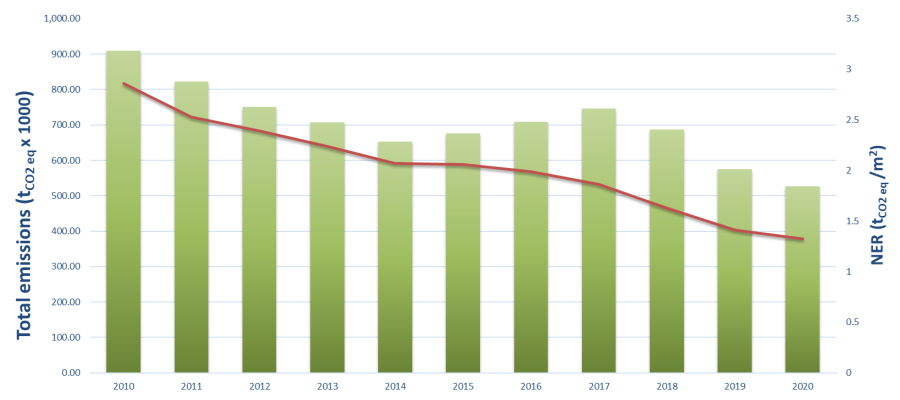European fluorinated greenhouse gas emissions cut by 42%
The European Semiconductor Industry Association (ESIA) has announced that the industry has achieved a 42% absolute emissions cut of ‘perfluorocompound’ gases from 2010 to 2020. PFCs are greenhouse gases which are used in the semiconductor manufacturing process.
The sector’s emission reductions show a strong commitment to fight climate change and was achieved through substantial investment to implement reduction practices at operations across Europe.
As the European Union is reviewing its climate legislation and fluorinated gas regulation in 2021, this leadership highlights the benefits and results of having a proactive approach from industry stakeholders. European PFC reduction efforts began in the mid-1990’s to address emissions and have continued through 2020.
Previously, European industry had voluntarily reduced emissions by 41% from the 1995 baseline to 2010. Figure 1 below outlines the reduction over the past decade. Over the same period, the industry has also reduced its overall emissions – normalised per unit of production index – by 54%.

Figure 1 – European semiconductor ‘perfluorocompound’ gas emissions 2010-2020
Semiconductors themselves make significant contributions to mitigating carbon emissions, facilitating energy savings, and reducing power consumption across society that enable the European Green Deal’s climate goals, primarily by improving the efficient use of energy.
Such improvements are made in areas such as automobiles, smarter mobility solutions (hybrid and electric vehicles), buildings, lighting, industry production, cloud storage and computing, and by facilitating the use of renewable energy sources.
Although the European semiconductor manufacturing industry itself is only a minor contributor to overall greenhouse gas emissions in Europe, the sector does emit some PFC gases during its manufacturing process. The use of PFC gases remains critical to the production of semiconductors, as there are no effective substitutes that can be utilised.
PFC emissions reduction technologies that are applied in their factory operations include: manufacturing process optimisation (reducing the amount of PFCs that are used and emitted), using alternative process PFC chemistries with lower global warming potential where possible, and installing abatement equipment systems.







